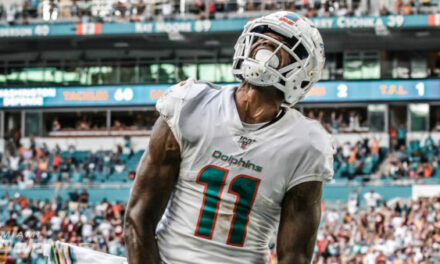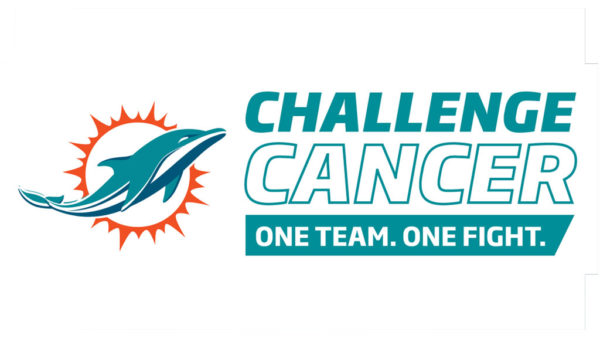
“We felt we had to be prepared for the worst.”
That what was Don Shula said about his Dolphins’ regular-season opener at Kansas City.
Turns out, what they got was the Chiefs’ worst in a 20-10 win that wasn’t nearly as close as the score would indicate.
Shula had plenty of reason to be apprehensive going into this game. Miami had ended Kansas City’s 1971 season with their classic two-overtime victory on Christmas Day in the Chiefs’ final game at Municipal Stadium.
The return match in the 1972 opener would be in brand new Arrowhead Stadium, part of the first baseball-football stadium complex built in the United States. Royals Stadium, with the center field waterfall, would open the following spring. Both stadiums, after major upgrades to keep up with the times, are still in use although the Royals are seeking a new downtown stadium. As was the trend for new stadiums in the 1970s, the Truman Sports Complex (named after Missouri native President Harry Truman) was built outside the city, adjacent to Interstate 70.
The Chiefs players and fans had over eight months to stew over a game that they would have won if not for two Jan Stenerud missed field goals, a fact that Don Shula was all too aware of.
Another concern would be the crowd. The playoff game, the only one ever at Municipal Stadium, was played before a sellout crowd of 50,861. The attendance for the opener at Arrowhead Stadium would approach 78,000-the stadium featured even more permanent seats than the Orange Bowl.
The environment and the quality of their opponent appeared to present a major test right out of the gates for the Dolphins, who had yet to win in their previous two opening games under Shula against inferior opponents. The Chiefs showed on Christmas Day that they were hardly an inferior opponent.
Miami was coming off a somewhat lackluster preseason, and the pass defense in particular did not seem up to par. In Kansas City they would face future hall of fame quarterback Len Dawson, all-pro wide receiver Otis Taylor, and do-it-all running back Ed Podolak, who had amassed 350 all-purpose yards (rushing, receiving, and kick returns) on Christmas Day.
On game day, it was hot. Really, really hot. The air temperature hovered around 90, but on the Tartan Turf field (another brand of plastic artificial turf), the thermometer hit 120 boiling degrees. The early versions of artificial turf magnified heat on a bright sunny day to astonishing levels. Of all the games he coached over his lengthy career, Shula said that game at Kansas City was the hottest-pretty amazing, considering he coached in South Florida for 26 years. He had written notes to refer to on the sidelines, but by the time he pulled them out during the game he could not read them-he had to sweat through them.
[pickup_prop id=”26562″]
It was the training camp with up to four practices a day in the south Florida heat that had the Dolphins better prepared to handle this sweltering Missouri day. It bothered them, sure, but most objective observers noticed the Chiefs players wilting well before the end of the game. To make a point, Dolphins guard Larry Little sprinted down the field when teams changed ends after the third quarter, refusing to acknowledge the heat and how tired he was.
The Dolphins’ defense dominated the first half, pouncing on Kansas City’s mistakes to set up the offense. A fumble by Podolak recovered by Dolphin safety Dick Anderson at the Miami 43-yard line set up their first touchdown. Bob Griese ended a seven-play drive with a 14-yard touchdown pass to newcomer Marlin Briscoe.
The score held at 7-0 until late in the half. Miami had another opportunity when Lloyd Mumphord blocked a 54-yard field goal attempt, but Griese was intercepted at the goal line by the Chiefs’ Mike Sensibaugh.
Then Miami essentially put the game away. Garo Yepremian kicked a 47-yard field goal with 59 seconds remaining in the first half to increase the Dolphins’ lead to 10-0. On Kansas City’s first play after the kickoff, Dawson’s pass intended for wide receiver Elmo Wright was intercepted by Dolphins safety Jake Scott at the Chiefs’ 40-yard line.
Griese struck immediately with a 30-yard completion to Paul Warfield. Two plays later, Larry Csonka bulled into the endzone to make the halftime score Miami 17, Kansas City 0. The 79,829 fans who had come for a celebration and revenge were instead hot and disappointed, booing as their team left the field. That sure didn’t take long.
It was the second half, though, that I believe set the tone for what was to come for the Dolphins in the 1972 season. Miami dominated both lines of scrimmage after the break. The defensive line pinned their ears back and put constant pressure on Dawson, causing him to settle for short passes to his backs and sacking him four times.
Offensively, the Dolphins punished Kansas City’s defensive front that featured four future hall of famers; tackles Buck Buchanan and Curly Culp, and linebackers Bobby Bell and Willie Lanier. The Dolphins’ offensive line featured two future Hall of Famers of their own; center Jim Langar, in his first year as a starter, and guard Larry Little, one of the best of all time. The other starters tackles Maulty Moore and Norm Evans, and guard Bub Kuchenberg (who should probably be in the Hall) helped pave the way for Csonka, Mercury Morris, and Jim Kiick to dominate.
Csonka put up the big numbers, carrying 21 times for 118 yards on what Pat Summerall, narrating This Week in Pro Football, called “demolition derby bursts.” After receiving the game ball, Csonka gave the credit to Griese, “Beside our great defense, the difference was simple: Griese. He called a fantastic game. He hit them with the right plays when they were in the wrong defenses. A lot of quarterbacks have all the dotted lines in their heads for the pass plays, but Griese has just as many for the running game. More for that matter.”
Griese’s ability to put the team first ahead of his own personal goals was a critical part of Miami’s success. With the running game going full gear in the second half, Griese attempted only two passes, completing one of them.
Regarding that great defense, the Chiefs game was the official debut of the “53 defense.” Born from necessity driven by injuries to defensive ends in training camp, linebacker Bob Matheson evolved into a hybrid linebacker/defensive end. This made it difficult for opposing offenses to know if Matheson (number 53, hence the name of the scheme) was going to rush or drop back in pass coverage, both of which he could do effectively. The brainchild of Dolphin defensive coordinator Bill Arnsparger, the 53 defense is believed to be the first recurring use of a hybrid defensive scheme. Matheson made an immediate impact with a sack of Len Dawson in this game.
Miami gave up only a field goal by Stenerud until Kansas City finally put together a drive that ended with a touchdown pass from Dawson to Wille Frazier with nine seconds remaining in the game. By that time, Arrowhead Stadium was less than half full.
Coach Shula was beaming after the game, “We controlled the game on the ground both offensively and defensively. We held their top receiver, Otis Taylor, pretty well in check by mixing up coverages on him. And I have to feel that the hot weather was an advantage to us. Our team does better when it’s real hot. This was a real hot one.” Taylor had gotten so frustrated that he was ejected from the game for protesting a penalty against him.
Shula concluded by saying, “I’m proud. Mighty proud.”
In the other locker room, Chiefs coach Hank Stram, labeled a genius after his team won the Super Bowl following the 1969 season, was grumpy. Mighty grumpy. He bemoaned his team’s “listless” effort, which led to nine penalties and four turnovers. “Turnovers and penalties are what killed us. It’s our fault, of course. We can’t blame anybody but ourselves. You make mistakes against a good team, and you lose. And that’s what happened to us.”
Stram would not enjoy the 1972 season. His team fell to an 8-6 record and missed the playoffs. Kansas City would not return to the playoffs until 1986.
The Chiefs’ slide was not in focus yet, so this was considered a big win by the Dolphins. A national television audience had watched while NBC’s venerable Curt Gowdy had described Miami’s domination.
The Dolphins had not played a flawless game. Yepremian had missed three field goals, two of them long ones, and Mercury Morris had put the ball on the ground twice, but Kansas City was unable to capitalize on any of those miscues to capture the slightest bit of momentum.
No less than Csonka himself felt this game set the tone for the season, as was shared on a Dolphins.com podcast, “It set the best foot forward. It set what was going to happen the rest of that year…we had definitely settled on a running ball-control offense…it turned into literally our definition.”
Hank Stram would not be the only coach in a grumpy mood after playing the Dolphins in 1972-not by a long shot.
Coming Next Week: Part 9 – Slippery When Wet
The Dolphins cruise to a win over the Houston Oilers in their home opener, but the wet Poly Turf at the Orange Bowl continued to be an issue. Also, Jim Kiick wrestles with his diminished role.













